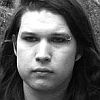|
|
|
|
|
|
|
|
| |
   
Stefan Grünewald,
Andreas Spillner,
Kristoffer Forslund and
Vincent Moulton. Constructing Phylogenetic Supernetworks from Quartets. In WABI08, Vol. 5251:284-295 of LNCS, springer, 2008.
Keywords: abstract network, from quartets, from unrooted trees, phylogenetic network, phylogeny, Program QNet, Program SplitsTree, reconstruction, split network.
Note: http://dx.doi.org/10.1007/978-3-540-87361-7_24.
Toggle abstract
"In phylogenetics it is common practice to summarize collections of partial phylogenetic trees in the form of supertrees. Recently it has been proposed to construct phylogenetic supernetworks as an alternative to supertrees as these allow the representation of conflicting information in the trees, information that may not be representable in a single tree. Here we introduce SuperQ, a new method for constructing such supernetworks. It works by breaking the input trees into quartet trees, and stitching together the resulting set to form a network. The stitching process is performed using an adaptation of the QNet method for phylogenetic network reconstruction. In addition to presenting the new method, we illustrate the applicability of SuperQ to three data sets and discuss future directions for testing and development. © 2008 Springer-Verlag Berlin Heidelberg."
|
|
|
|
|
|
| |
   
Stefan Grünewald,
Kristoffer Forslund,
Andreas W. M. Dress and
Vincent Moulton. QNet: An agglomerative method for the construction of phylogenetic networks from weighted quartets. In MBE, Vol. 24(2):532-538, 2007.
Keywords: abstract network, circular split system, from quartets, phylogenetic network, phylogeny, Program QNet, reconstruction, software.
Note: http://mbe.oxfordjournals.org/cgi/content/abstract/24/2/532.
Toggle abstract
"We present QNet, a method for constructing split networks from weighted quartet trees. QNet can be viewed as a quartet analogue of the distance-based Neighbor-Net (NNet) method for network construction. Just as NNet, QNet works by agglomeratively computing a collection of circular weighted splits of the taxa set which is subsequently represented by a planar split network. To illustrate the applicability of QNet, we apply it to a previously published Salmonella data set. We conclude that QNet can provide a useful alternative to NNet if distance data are not available or a character-based approach is preferred. Moreover, it can be used as an aid for determining when a quartet-based tree-building method may or may not be appropriate for a given data set. QNet is freely available for download. © The Author 2006. Published by Oxford University Press on behalf of the Society for Molecular Biology and Evolution. All rights reserved."
|
|
|
|